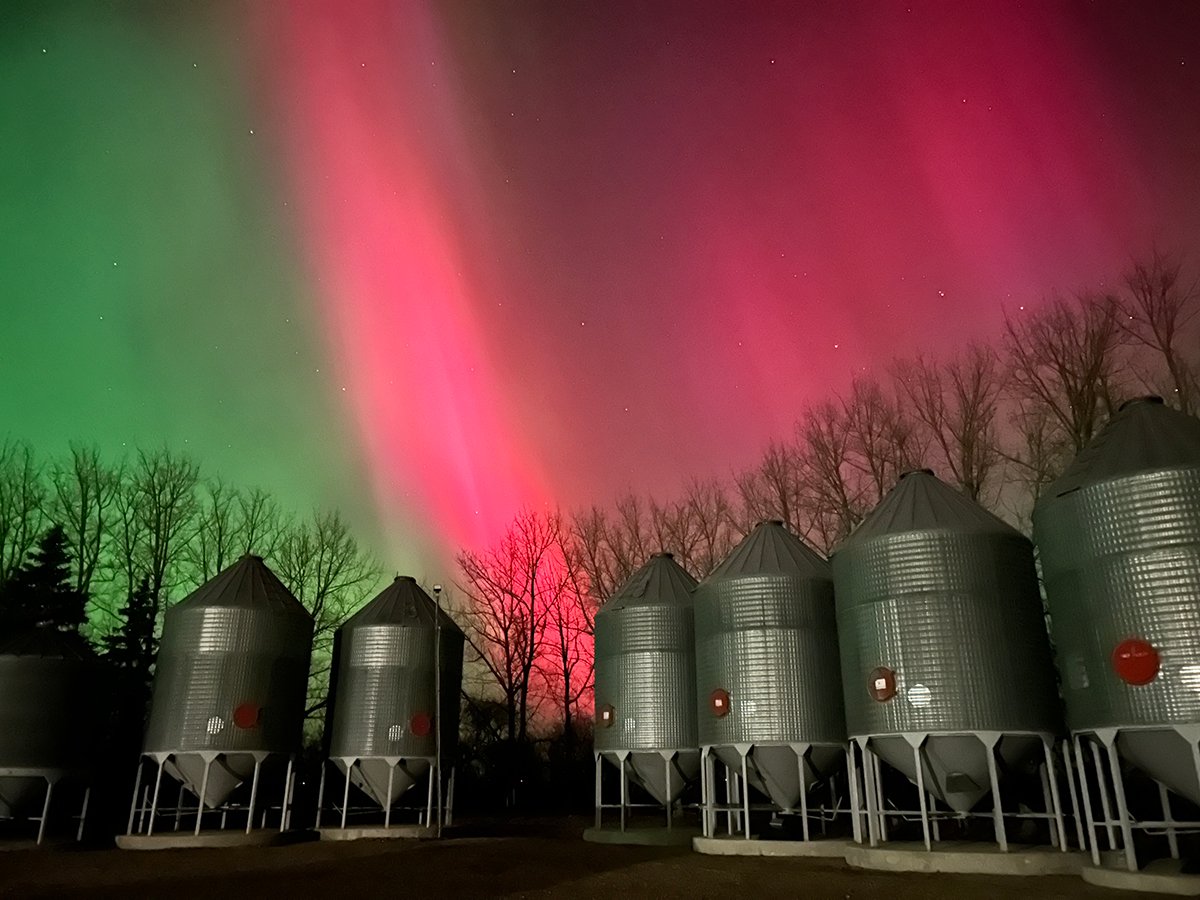HAMILTON, Ont. — Take three women from varying farm realities, shake together and you get a reaction as smooth and slick as ice cream on a hot summer day.
The women all agree that their international group should try to influence the World Trade Organization.
In a June 13 interview at the Associated Country Women of the World convention, the small group found a unanimity that surprised them.
Ulla Ditlevsen, vice-chair of the women’s section of the Danish Family Farmers, said her members fear the WTO.
Read Also

Powerful solar storm lights up night time sky
Prairie skywatchers have been on high alert the last few nights as spectacular aurora displays have made the night time…
“We are afraid the U.S. and Australian farmers make more decisions than Denmark wants,” she said. “WTO thinks in a technical way …. It supports and makes the winners.”
Marie Lally, president of the Country Women’s Association of Australia, said the WTO seems out of touch with farmers.
“It’s all bottom line — don’t worry about rural farmers. Women’s influence could straighten that out.”
Beverly Schnepel of the Iowa Farm Bureau Women in the United States agreed that “people play around with the products we produce and we get really upset if they use food as a weapon.”
Ditlevsen is also concerned about how WTO treats developing countries. They all work with projects to help women in Africa, Asia and eastern Europe.
“ACWW could bring third world sensitivities,” Ditlevsen said.
The women agreed that world trade rules have led to some unusual competition, with Brazilian oranges competing with domestic ones in Australia, and Dutch and Danish cucumbers “passing each other on the highway” as they are driven to markets.
“Sometimes I’m surprised at the items we find imported into our country,” Schnepel said.
While Schnepel and Ditlevsen collect government subsidies, they agreed with Lally that they would prefer to get their income from consumers instead of taxpayers.
Ditlevsen farms 160 acres, growing wheat and barley; Schnepel raises corn, soybeans and cows on 900 acres and Lally has 5,000 acres, mainly wheat.
All farm with family members and worry that there are fewer farmers every year. As farms grow in size, the people disappear.
“We don’t want the land, we want the neighbours,” said Ditlevsen.
She joked that in Denmark it is commonly said a man needs three wives — one to work on the farm, one to earn money off the farm, and the third to have fun with.
Schnepel said the American Midwest is similar to Denmark in that small farmers must get bigger or seek off-farm income.
“I have a lot of empty farmsteads around me. Many farm wives work off the farm. My husband died 20 years ago and my son works the farm. I’m his hired hand.”
Lally said Australian farmers are trying to diversify into canola, peas, beans and acquaculture, but water shortages can undermine diversification attempts.
All three women have children to take over their farm and they want them to, despite tough prices for commodities. They acknowledge the transition is not easy, but said adult children must be allowed to make their own mistakes, as long as they aren’t major ones.
Besides poor prices, the women said farmers are concerned about urban sprawl, the pressure to be environmentally pure, and the need to educate consumers.
Ditlevsen’s group is trying to encourage farmers to find a specialty different from their neighbours. It is also encouraging farmgate sales and direct marketing.
She said farmers have a low image in Denmark because they are blamed for spoiling the land and water. Lally said genetically modified crops pose another public image problem for farmers because many people are uncertain of their safety.
Schnepel said farm organizations give producers clout by lobbying legislators and educating the public.
“My lawyer has followed my tractor down the highway.”














